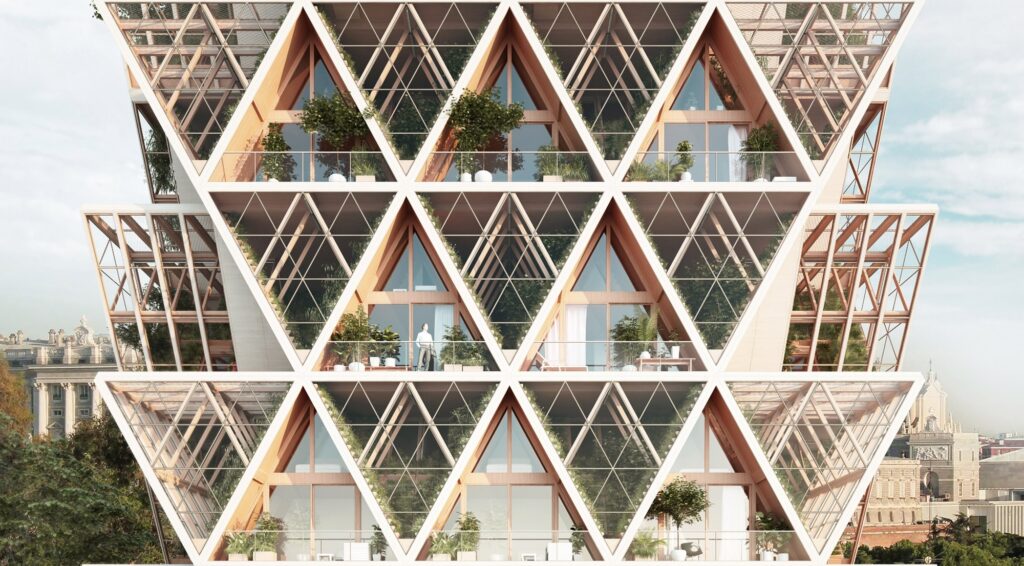In the ever-evolving tapestry of urban landscapes, the concept of space has become both a precious commodity and a challenge. With populations swelling and urbanization accelerating, traditional horizontal expansion has often collided with environmental constraints, infrastructure limitations, and the need to preserve valuable green spaces. In response, a revolutionary solution has emerged: vertical construction. This architectural marvel is not merely reshaping skylines but redefining the very essence of urban living.

Vertical construction, epitomized by towering skyscrapers and high-rise structures, represents a paradigm shift in urban design philosophy. Gone are the days when cities sprawled endlessly outward, consuming vast tracts of land and encroaching upon natural habitats. Instead, architects and urban planners are looking upward, harnessing the limitless potential of the vertical dimension to accommodate growing populations and maximize land efficiency.
One of the most compelling drivers behind the rise of vertical construction is the imperative of sustainability. As concerns about climate change intensify, cities are under increasing pressure to minimize their ecological footprint. Vertical construction offers a compelling solution by concentrating human activity within a smaller footprint, thereby reducing land consumption and preserving open spaces. Moreover, advancements in green building technologies have enabled architects to design skyscrapers that are energy-efficient, incorporating features such as solar panels, green roofs, and rainwater harvesting systems to minimize resource consumption and emissions.
Furthermore, vertical construction has catalyzed a renaissance in urban mobility. With populations becoming increasingly concentrated in dense urban cores, traditional modes of transportation have struggled to keep pace with demand, leading to congestion, pollution, and inefficiency. Vertical construction offers an elegant solution by fostering mixed-use developments that integrate residential, commercial, and recreational spaces within a single structure. This vertical integration not only enhances convenience and accessibility but also encourages alternative modes of transportation such as walking and cycling, reducing reliance on cars and mitigating the environmental impact of urban mobility.
The advent of vertical construction has also sparked a reimagining of the urban social fabric. Traditionally, high-density living has been associated with anonymity and alienation, as residents become mere faces in a sea of humanity. However, vertical construction is challenging this paradigm by fostering vibrant vertical communities where residents can forge meaningful connections and cultivate a sense of belonging. Common amenities such as rooftop gardens, communal lounges, and shared workspaces encourage interaction and socialization, fostering a sense of camaraderie and community spirit among residents.
Moreover, vertical construction has unlocked new possibilities for architectural innovation and creative expression. Freed from the constraints of horizontal expansion, architects are pushing the boundaries of design, creating iconic skyscrapers that captivate the imagination and redefine the skyline. From the shimmering glass facades of Dubai’s Burj Khalifa to the breathtaking cantilevered gardens of Singapore’s Marina Bay Sands, vertical construction has become a canvas for architectural experimentation, pushing the envelope of what is possible in the built environment.
However, the rise of vertical construction is not without its challenges and controversies. Critics argue that skyscrapers exacerbate social inequality by catering primarily to the affluent elite, pricing out lower-income residents and contributing to gentrification. Moreover, concerns have been raised about the impact of tall buildings on urban microclimates, with skyscrapers casting shadows and disrupting airflow, potentially exacerbating heat island effects and compromising the livability of surrounding areas.
Additionally, there are concerns about the structural integrity and safety of tall buildings, particularly in seismically active regions or areas prone to extreme weather events. Ensuring the resilience and durability of skyscrapers requires rigorous engineering standards and meticulous attention to detail, adding complexity and cost to vertical construction projects.
Despite these challenges, the rise of vertical construction represents a transformative chapter in the evolution of urban landscapes. By embracing the vertical dimension, cities are not only accommodating growing populations but also fostering sustainability, mobility, and community. As we look to the future, the skyline will continue to evolve, punctuated by towering structures that stand as testaments to human ingenuity and the enduring quest to build towards the sky.
…